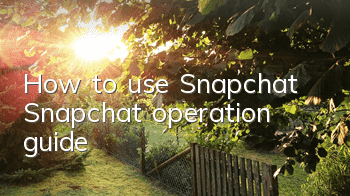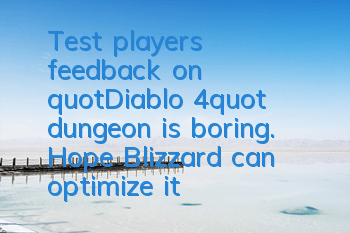5 tricks to teach you how to play Snapchat easily
Image source/123rf.com.cn
Twenty years ago, retailers had few other alternative advertising modes except billboards, television and radio broadcasts. With the rise of smartphones and tablets and the popularity of social networks, the door to opportunity has been opened for e-commerce. From Facebook, Instagram, to Snapchat, Printerest, merchants now have more and more opportunities to sell and promote their products through social networks.
What is social commerce?
Social commerce refers to using the influence of social networks to increase product conversion rates. Social commerce can appear on social networks in any form, such as product promotion soft articles, promotional advertisements, user experience and other methods to attract attention, bring traffic to the merchant’s e-commerce platform, and ultimately achieve purchase.
"Millennials are the most purchasing consumer group today. 80% of millennial consumers are keen on social networks. They like to track brands on social networks and interact with brands. At the same time, they are accustomed to collecting information on the Internet and are willing to share this content with others through social networks. Of these, 60% of people will be affected by this information. This is why more and more brands are turning to social networks." —— Ms. Sun Ye, head of the Chinese market at Lengow, told Hugo.com.
Social networks play an increasingly important role in consumer purchasing behavior. It connects consumers and brands closely, and the 24/7 interaction creates an excellent opportunity for merchants to build good customer relationships. At the same time, it can also increase brand awareness. Therefore, retailers need to understand how to use social commerce to attract more consumers and increase sales.
The following are 5 ways to use Snapchat to increase product exposure:
Snapchat
Snapchat users continue to grow every day. Today, it has an average daily active user worldwide, and users spend 25-30 minutes on Snapchat every day. The reason why Snapchat is so popular is precisely because of its magical function of "burning after reading". "Snapchatters" sends 10-second video clips or photos that are deleted after being viewed. According to Lengow France LeSales data, in the United States, more than 50% of users under the age of 25 send a total of 3 billion snaps per day.
In 2016, Snapchat saw business opportunities on its platform, introducing e-commerce advertising, giving retailers the opportunity to tailor vertical advertising to their goals, and at the same time, increasing opportunities to interact with customers.
1. Target the right target group
Adjust audience targeting is crucial to maximizing ROI. Merchants can target audiences on Snapchat based on interests, demographics, locations and devices used, leveraging this information to improve and improve campaigns to reach the most valuable visitors and users.
Similar to Facebook and Instagram functions, Snapchat can also build custom audiences based on data provided by merchants.
Merchants can make full use of rating matching, view audiences and capture interactive audiences, so that merchants can match existing users' data and will have Snapchat user targeting similar to existing users' characteristics.
Transfer the right information to the right people is the biggest advantage of Snapchat campaigns. In 2016, Smirnoff, a famous British vodka brand, worked with Snapchat during the Wireless, Reading and Leeds festivals events to accurately locate its target group (British people under 18 years old), and received 3.9 million users using Smirnoff's filter advertisements, and the number of cameras played 2.9 million times.
2. Promote APP download and sales
A study by Yahoo Flurry Analytics shows that 90% of smartphone users spend their time on apps on mobile devices. With the rise of mobile e-commerce, more and more people are accustomed to downloading and using APPs. According to a survey by Lengow France LeSales, 4/5 of mobile consumers use APPs rather than web browsers. There is no doubt that APPs play an increasingly important role in e-commerce.
For merchants, APPs can promote interaction with consumers, improve customer loyalty and retention rates, and thus increase sales. To meet merchant requirements, Snapchat has launched the "Snap Ads + App Install" option, allowing retailers to create videos or static ads through the "Install" button, and then go to an embedded App Store or Google Play Store page. With just one "one-click", users can install your application in the background.
In addition, in addition to the "Install" button, Snapchat also provides 9 other buttons, such as: "Install Now", "Order Now", "Add to Cart", etc. What does this mean for retailers? Snapchat uses these call-to-action buttons to attract users to click, allowing users to unconsciously download merchants' APPs to achieve the purpose of users interacting with merchants through advertisements.
3. Added using Snapchat Shopping AppRetailer web page visits
Social networks have a great influence in consumer purchase decisions, and as a study by the ODM Group noted, 74% of consumers rely on social networks to guide their next purchase.
In 2016, keeping pace with Facebook and Instagram, Snapchat launched the Snap Ads + Web View function, instantly transforming into an e-commerce platform. This feature allows users to access preloaded websites immediately after ads are played. Additionally, the “Snap Ads + Web View” format has more call-to-action buttons than the app download format, including buying tickets, booking now and booking.
In addition to increasing website visits, Snapchat also has the function of automatically entering user information (including name, email address and phone number), which not only saves consumers' time and energy, but also provides retailers with important customer information. Therefore, this advanced ad format is the best choice for improving business website traffic and conversion rates.
4. Driving traffic to physical stores through location special effects
Retailers are always looking to build bridges between online and offline to attract more customers to their physical stores. Snapchat creates location effects that provide retailer logos based on where the consumer is located. These special effects allow Snapchat users to have surprises every day. At the same time, it also increases the exposure and popularity of merchants. According to Google and TNS, 74% of shoppers “determine word of mouth as a key factor in buying decisions.” Then, Snapchat's location effects create "reputation" for retailers.
Fast food chain Burger King turns to use Snapchat's location effects feature to promote new products, with the goal of promoting the latest additions in the store's purchase menu and sharing their experience with friends. 76% of users said they were very willing to share pictures with location effects with friends because it brought them happiness.
5. Create innovative activities to stimulate consumption
Sponsored by Snapchat exclusive competitions and gift gifts can be an effective way to interact with customers and brands, while also improving users' awareness of products. Most users like to watch brand stories on Snapchat to learn about product development or product inspiration.
Many fashion brands such as Burberry attract more consumers by sharing discount codes on Snapchat.
Conclusion
Snapchat is still a new face in the e-commerce industry, surpassing Facebook's advertising systemIt has a long way to go. However, as a social marketing tool, Snapchat advertising campaigns are an opportunity that retailers cannot miss, reaching the right target groups, maximizing ROI, and building stronger relationships with customers through the vertical advertising characteristics of the social network.









